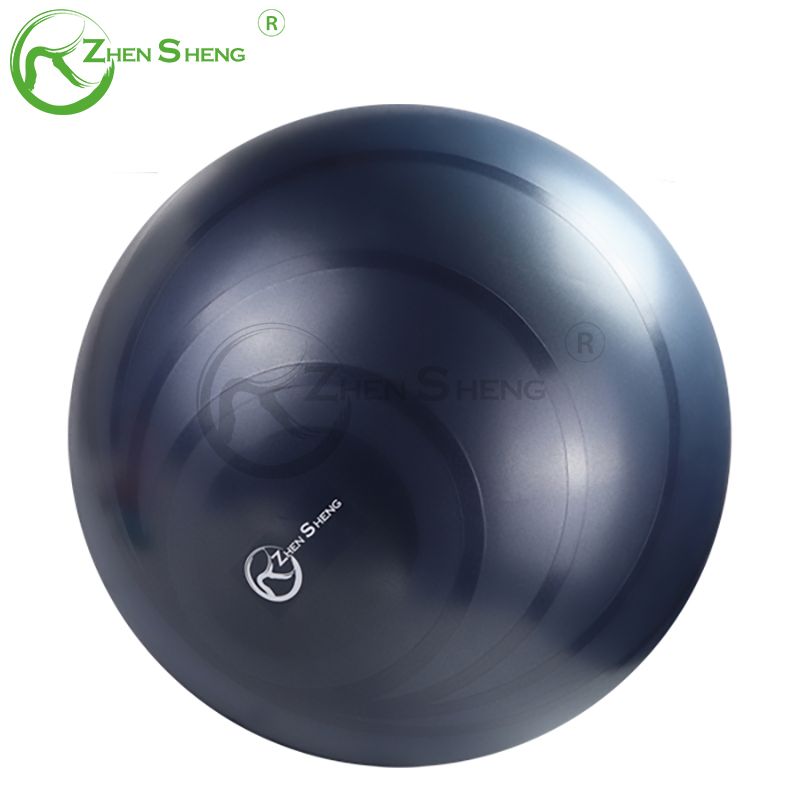Core strength and balance are fundamental components of overall fitness. Traditional core training often involves exercises like sit-ups and planks, but incorporating a yoga ball into your routine can take your core training to a whole new level. A yoga ball provides a dynamic and challenging surface that works your core muscles and improves overall stability. In this article, we’ll dive into the realm of core strength and balance training with a yoga ball. We’ll focus on specific exercises and routines that target the core muscles and improve stability. Additionally, we’ll discuss the advantages of using a yoga ball over traditional core exercises and provide tips for maximizing results.
Targeted core exercises:
A yoga ball provides an unstable surface that forces the core muscles to engage and stabilize the body. Here are some specific exercises that can target your core muscles and increase stability:
Ball crunches: Sitting on a ball with your feet flat on the floor, perform a sit-up by contracting your abdominal muscles and lifting your upper body.
Plank Roll: In a plank position, place your hands on a ball and roll the ball forward while keeping your body straight. Roll the ball back to the starting position.
Russian Twist: Sit on a ball with your feet off the ground and your knees bent. Hold a weight or medicine ball in front of you and twist your torso side to side to engage your external obliques.
Superman Stretch: Lie on a ball, belly down, and stretch your arms and legs. Simultaneously lift the arms and legs off the ball, working the back muscles and core.
Improves Core Activation and Muscle Engagement:
Using a yoga ball during core workouts increases core activation and muscle engagement compared to traditional floor exercises. The instability of the ball requires constant adjustment and balancing, which results in more recruitment of the deep core muscles. Increased muscle engagement helps build core strength more effectively, which improves overall stability and balance.

Enhanced balance and stability training:
Balance is an important part of core strength. A yoga ball is an excellent tool for balance and stability training. Incorporating exercises like single-leg balances or yoga ball squats will challenge your stability and force you to engage your core to maintain balance. Over time, this can dramatically improve your overall balance and stability. Click here to learn more!
Greater range of motion and flexibility:
A yoga ball can provide a greater range of motion during core exercises. For example, performing sit-ups on a yoga ball allows you to further extend your spine, activating more muscles in the process. Additionally, the yoga ball supports the back and allows for deeper stretches, promoting flexibility in the core and surrounding muscles.
Tips for maximizing results:
Start with a yoga ball that’s the right size so that your hips and knees can form a 90-degree angle when you sit on the ball.
Focus on maintaining proper form and alignment during the exercise for maximum effectiveness and safety.
Gradually increase the difficulty and intensity of the exercises by adding additional resistance, such as weights or resistance bands.
Consistency is key. Incorporate yoga ball exercises into your fitness routine at least 2-3 times a week and see dramatic improvements in core strength and stability.
Listen to your body and adjust the difficulty level as needed. It’s important to challenge yourself, but also to avoid overexertion or injury.
in conclusion:
Incorporating a yoga ball into your core workout can take your fitness to new heights. By engaging the core muscles and improving stability, the yoga ball provides a dynamic and challenging platform for core training. Through targeted exercises, increased muscle engagement, improved balance and greater range of motion, yoga ball workouts can help you achieve a stronger core and better balance. So grab a yoga ball, challenge yourself, and reap the benefits of a stronger, more stable core.

